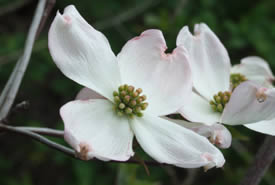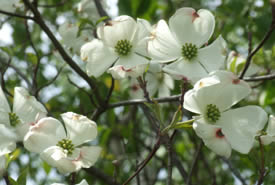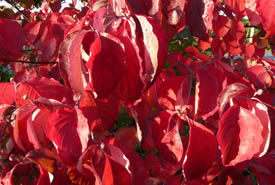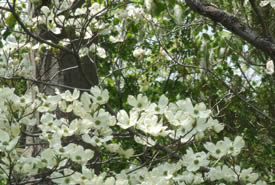Flowering Dogwood

Flowering dogwood (Photo by Bernt Solymar)
More than 50 different species of birds feed on the bright red berries of the flowering dogwood, making it a very important wildlife tree. In turn, these seed-eating birds help spread the flowering dogwood across the landscape.
Medicinal and cultural uses of flowering dogwood
Despite being an important food source for wildlife, the seeds of the flowering dogwood are poisonous to humans. However, First Nations people used the flowering dogwood seed for medicinal purposes and its fine-grained wood for carving and making tools.

Flowering dogwood blooms (Photo by Bernt Solymar)
An important indicator species
The Carolinian Canada zone is the only area in Canada where the flowering dogwood grows, making it a Carolinian Canada indicator species.
Indicator species are plants or animals whose presence indicates an environmental condition, habitat type, and so on.

Fall flowering dogwood (Photo by Bernt Solymar)

Flowering dogwood (Photo by Bernt Solymar)
Supported by the Weston Family Foundation.




